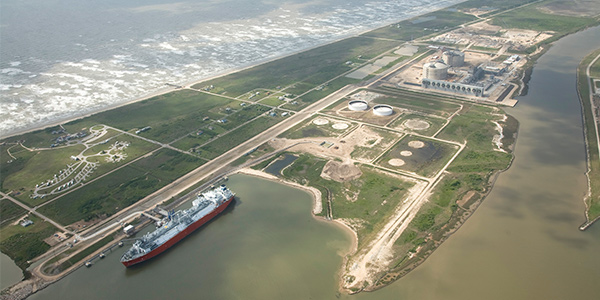By Michael Brooks
WASHINGTON — FERC voted 3-1 on Thursday to approve the construction of a fourth liquefaction unit at the Freeport LNG export terminal in Brazoria County, Texas (CP17-470).
The unit, called a “train” in the LNG industry, will allow for the export of an additional 5.1 million metric tons per annum (mtpa), equivalent to about 0.74 Bcfd. Currently, the facility has a capacity of 15.49 mtpa (2.14 Bcfd), according to FERC.
The approval of the so-called Train 4 Project marks FERC’s fourth approval of an LNG project this year, following last month’s approval of the Driftwood and Port Arthur projects, and February’s approval of the Venture Global Calcasieu Pass project. And as has become common, the order elicited celebration from Chairman Neil Chatterjee, a reluctant concurrence from Commissioner Cheryl LaFleur and a dissent from Commissioner Richard Glick over the commission’s reticence to assess the project’s impacts on global climate change.
“I’m proud of the efforts by the commission and its staff to process today’s and our previous LNG orders,” Chatterjee said in a statement. “Exporting LNG from the United States can help increase the availability of inexpensive, clean-burning fuel to our global allies who are looking for an efficient, affordable and environmentally friendly source of generation.”
FERC disclosed in its order that its environmental assessment (EA) of Train 4 estimated that operation of the project may result in emissions of up to 491,500 metric tons per year of carbon dioxide equivalent, increasing national emissions by about 0.01%. “Currently, there are no national targets to use as benchmarks for comparison,” the commission said.
This was enough to secure LaFleur’s vote, though she warned that the order, as with previous LNG approvals, are vulnerable to judicial scrutiny. She also noted that an additional risk existed for Train 4 because the commission issued an EA instead of an environmental impact statement (EIS). Under the National Environmental Policy Act, federal agencies issue an EIS when they find that an action will have a significant impact on the environment.
“This tension between the finding of no significant impact, and the commission’s failure to assess significance of climate change impacts, heightens the risk that a court could vacate and remand this project, simply on the basis of which environmental document was prepared,” LaFleur said in her concurrence.
At Thursday’s meeting, Glick noted that Chatterjee has said that the Natural Gas Act doesn’t give the commission authority to analyze the impact of natural gas infrastructure on climate change. He then turned and appealed directly to Chatterjee, suggesting that they “work together to send some draft legislation to Congress to fix the problem and clarify that FERC does have such authority.”
Asked by reporters about Glick’s remarks after the meeting, Chatterjee dismissed the idea, saying “there is a 0% chance that such legislation could get through the United States Senate. We have so many things to focus on, that to me is not a worthwhile thing to spend time on.”
Commissioner Bernard McNamee said the approval was “another great achievement.” He emphasized “that we have considered all the environmental effects, including greenhouse gases. I know there’s a disagreement about … how those should be measured. … But a disagreement about that does not mean they were not considered.”



